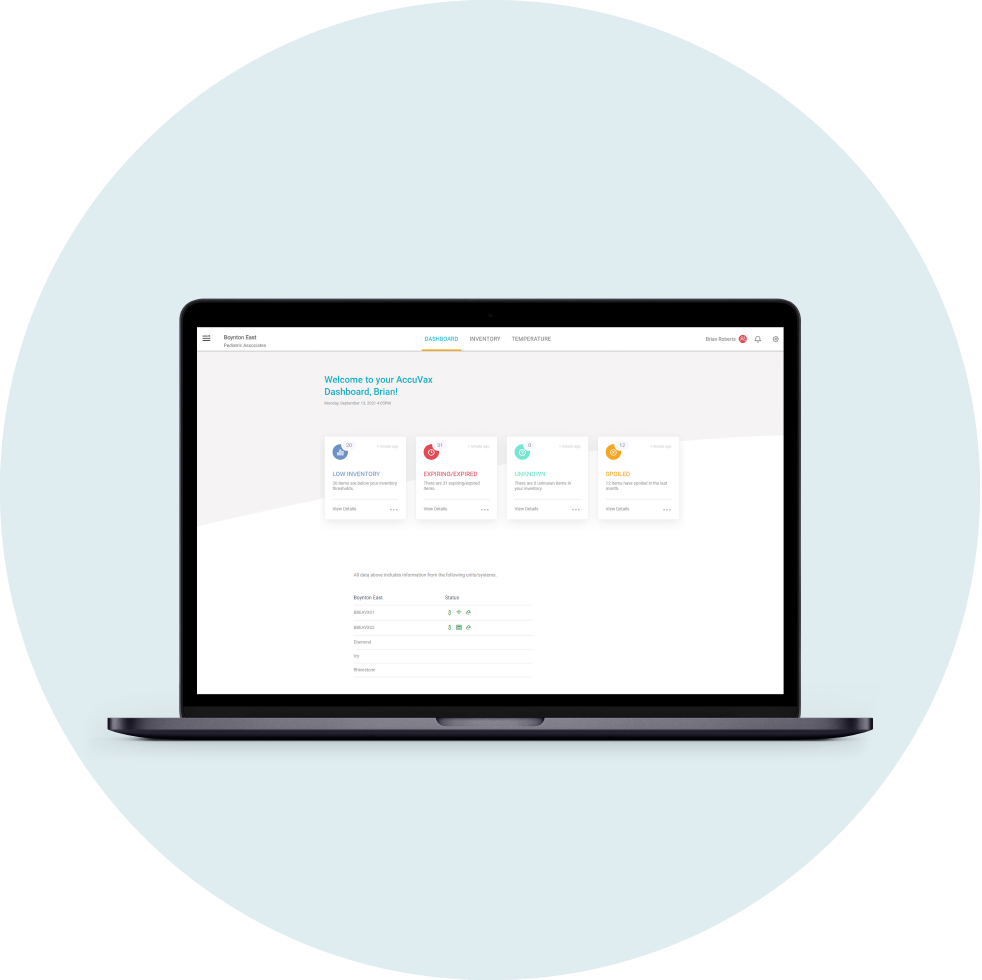Influenza (flu) season is a significant time at health practices around the country and this year will be no exception. While the period is usually characterized by high infection rates, the US reported just over 2,000 flu cases during the 2020-2021 flu season. That’s a far cry from the estimated 38 million cases during the 2019-2020 flu season.
While some have suggested that lower infection rates were due to less testing, the number of flu tests in the US was consistent with previous years. It’s more likely there were fewer cases due to the coronavirus (COVID-19) pandemic. With high COVID-19 infection rates and concerns of a “twindemic”, strict public health measures were in place and more people got vaccinated against the flu.
So what can we expect this year? Experts warn of an unprecedented 2021-2022 flu season following the COVID-19 pandemic. Read on to find out if this will be a bad flu season and how your practice can prepare using these 2021-2022 flu season predictions.
Will This Be a Bad Flu Season?
After experiencing a quiet flu season and lifting most COVID-19 restrictions, we may be in for a more challenging flu season this year. Here’s why the 2021-2022 flu season predictions aren’t quite so bright.
Fewer Virus Specimens to Make Flu Vaccines
While fewer infections during the 2020-2021 flu season sounds like a positive, it resulted in fewer virus specimens. These specimens are used to determine the strains of the virus, which can help experts predict upcoming strains and make recommendations for the flu vaccine.
With limited information for the 2021-2022 flu season predictions, this year’s vaccines will contain most of the same strains as the 2020-2021 vaccines. Because there were fewer infections last season, experts also believe it is less likely that the virus mutated.
Despite some concerns about the effectiveness of this year’s flu vaccines, it’s important to remind your patients that getting vaccinated still offers additional protection against a potentially deadly virus.
Fewer COVID-19 Restrictions to Prevent the Spread
Masks, social distancing, and regular hand-washing during the height of the COVID-19 pandemic made it harder for the flu virus to spread through communities. Now, as the country reopens, there are far fewer COVID-19 restrictions in place for the 2021-2022 flu season.
You can encourage your patients to follow the same measures to prevent the spread of the flu. However, they may be reluctant out of “pandemic fatigue”. Many of your patients will be excited to get back to normal by returning to work and sending their children to school. Some people may even want to make up for lost time by going out and socializing even more frequently — especially if they’ve been vaccinated against COVID-19 and feel safe.
You can inform your patients about staying healthy after the COVID-19 vaccination.
Use 2021-2022 Flu Season Predictions to Prepare Your Practice
It’s impossible to know whether the 2020-2021 flu season is an anomaly or set to repeat. What’s important is that your practice can support as many patients as possible by safely storing, tracking, and promoting flu vaccines.
During the uncertainty of last year’s flu season, the practices that had prepared were more able to serve patient needs. With the 2021-2022 flu season looking just as unclear, here are a number of actions you can take to get ahead of the curve.
Get Your Inventory Ready Early
The CDC usually recommends giving patients the flu vaccine by the end of October for the highest level of protection. During the 2020-2021 flu season, when there were concerns about a twindemic, patients were advised to get their flu vaccinations as early as late August and September.
Flu vaccines administered earlier than August might not offer the same level of protection throughout the entire flu season, especially among older populations. However, it’s important to start vaccinating your patients before the flu virus starts spreading through your community. Like the COVID-19 vaccines, the flu vaccine needs around two weeks to create the antibodies needed to provide immunity. Children aged 6 months to 8 years also require two doses of the flu vaccine, four weeks apart.
By having your inventory ready sooner rather than later, your practice will be able to heed this year’s specific recommendations, meet demand, and help patients get protected before the 2021-2022 flu season begins.
Be Ready for Bulk Inventory and Changing Demand
With the risk of a twindemic and earlier flu vaccination schedules, the 2020-2021 flu season saw an increased demand for vaccines. The US distributed a total of 193.9 million doses — the highest number to date — and over half the population received a vaccine. The 2021-2022 flu season could be a similar story. Then again, many patients may try to forget about these health emergencies at the risk of their own safety due to pandemic fatigue.
You will need enough flu vaccines for all your patients for the entire 2021-2022 flu season. Vaccines must be stored safely until they’re administered, whether that’s in August or after January. That means you should have plenty of reliable storage space for bulk inventory.
Even if there’s less demand for flu vaccines this year, one thing remains the same: Unless a patient is under 6 months of age or has a life-threatening allergy to the ingredients, they should still be encouraged to get a flu vaccine. You can learn more about improving vaccination rates at your practice in this blog post.
Make Sure You Have the Right Equipment
Having the right equipment will make practice operations easier and keep your flu vaccines safer. The AccuShelf Inventory Management System can track bulk inventory and store it at the right temperature with digital data loggers until the vaccines are ready to be administered. If any inventory approaches the expiration date or incorrect temperature, your practice is notified, so you can prevent vaccine waste without manually checking each vial.
Thanks to streamlined workflows and easy wireless scanning, you can upload inventory in seconds. This helps you to prepare for the busy flu season even faster. With complete cloud data reports, you can also track your inventory at a glance and ensure there are no sudden disruptions to your immunization program due to a lack of vaccines.
To learn more about tracking and safely storing the flu vaccine, read this blog post on flu vaccine refrigeration.





